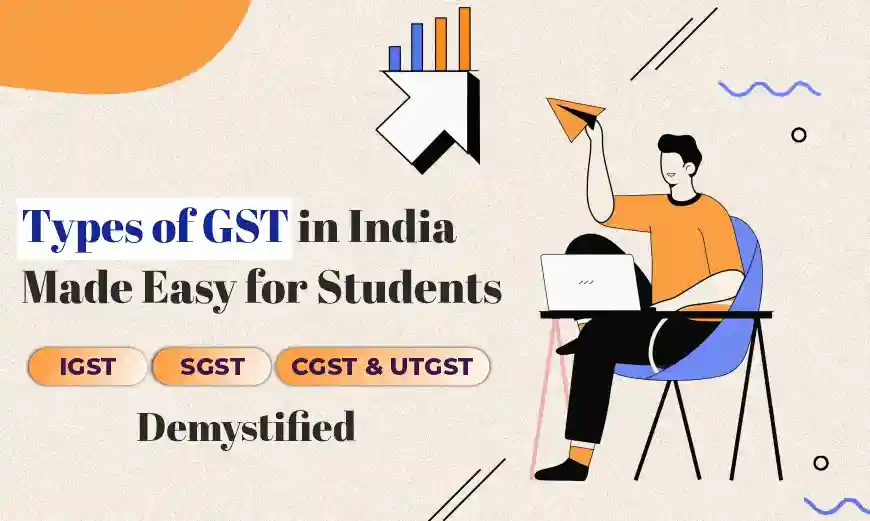
Types of GST in India: IGST, SGST, CGST & UTGST Made Easy for Students
The introduction of GST in India was a major change in the way taxes are imposed and collected. The GST system replaced several complex indirect taxes with a single unified framework. This system introduces different types of GST in India and simplified the taxation system . It made the tax ecosystem more transparent and efficient.
This guide provides a comprehensive overview of the different types of GST in India. We will discuss the types of GST in India with its benefits. We will also see how it is implemented in the real scenarios. Hopefully, all this deep explanation will help you to understand the key concepts clearly.
Whether you are a business owner, a consumer, or simply curious about taxation, this guide will provide you with valuable insights into GST in India. Firstly we will see the basics that what GST means.
Table of Contents
What is GST?
Goods and Services Tax (GST) is a tax that is levied on the sale of goods and services. It is a single tax that replaces many other indirect taxes, such as VAT, excise duty, and service tax. GST is collected at each stage of the supply chain, and businesses can claim credit for taxes paid on inputs.
This helps to eliminate double taxation and promotes transparency. GST is a more efficient and simplified taxation process than the previous system.
Replaced Taxes with GST
Goods and Services Tax (GST) replaced several indirect taxes in India. Here are some of the key taxes that were replaced by GST:
- Central Taxes:
- Central Excise Duty
- Additional Excise Duties
- Excise Duty under the Medicinal and Toilet Preparations (Excise Duties) Act, 1955
- Countervailing duty (CVD) is an additional import duty imposed on goods imported from countries that are believed to be subsidizing their exports.
- Special Additional Duty of Customs (SAD)
- Service Tax
- Central Sales Tax (CST)
- Central Surcharges and Cesses
- State Taxes:
- Value Added Tax (VAT)
- Central Sales Tax (CST) on inter-state sales
- Purchase Tax
- Luxury Tax
- Entertainment Tax (not levied by local bodies)
- Entry Tax (All forms)
- Taxes on advertisements
- Taxes on lotteries, betting, and gambling
- State Surcharges and Cesses
- Others:
- Octroi
- Entry tax not instead of Octroi
GST replaced these various taxes with a unified tax system. It makes the tax structure simpler reduces the cascading effect of taxes and promotes a more efficient and transparent taxation process.
Benefits of GST in India
The key benefits of GST implementation in India in bullet point form:
- Simplified tax structure: GST replaced multiple taxes with a single tax, making it easier for businesses to comply with tax laws.
- Input tax credit: Businesses can claim credit for the tax paid on their purchases, reducing their overall tax liability.
- Reduced cascading effect: GST eliminates the “tax on tax” scenario, making goods and services more affordable.
- Uniform tax rates: Standardized tax rates across states create a level playing field for businesses and encourage smoother inter-state trade.
- Ease of doing business: GST simplifies inter-state transactions, reduces paperwork, and streamlines logistics, making it easier for businesses to operate across regions.
- Boost to manufacturing and exports: Lower manufacturing costs and reduced complexities enhance the competitiveness of Indian goods and encourage export growth.
- Transparency and accountability: The digitalized GST system enhances transparency, reduces tax evasion, and increases government revenue collection.
These benefits collectively contribute to a more efficient and transparent tax system that positively impacts India’s economy and business environment.
Student Guide for GST Basic Concepts
GST Return Types: Due Dates and Filing Procedures
GST Reporting: Complete Overview of 2-Factor Authentication in GST
Now, we will explain the different GST types in India with real-life examples for more better understanding.
How many types of GST are there in India?
Goods and Services Tax (GST) is a comprehensive tax system in India that encompasses various types. Understanding these distinct GST categories is vital for businesses and consumers alike. Businesses need to understand the different types of GST that apply to their operations in order to comply with the law. Consumers need to understand the GST that they are paying on the goods and services they purchase.
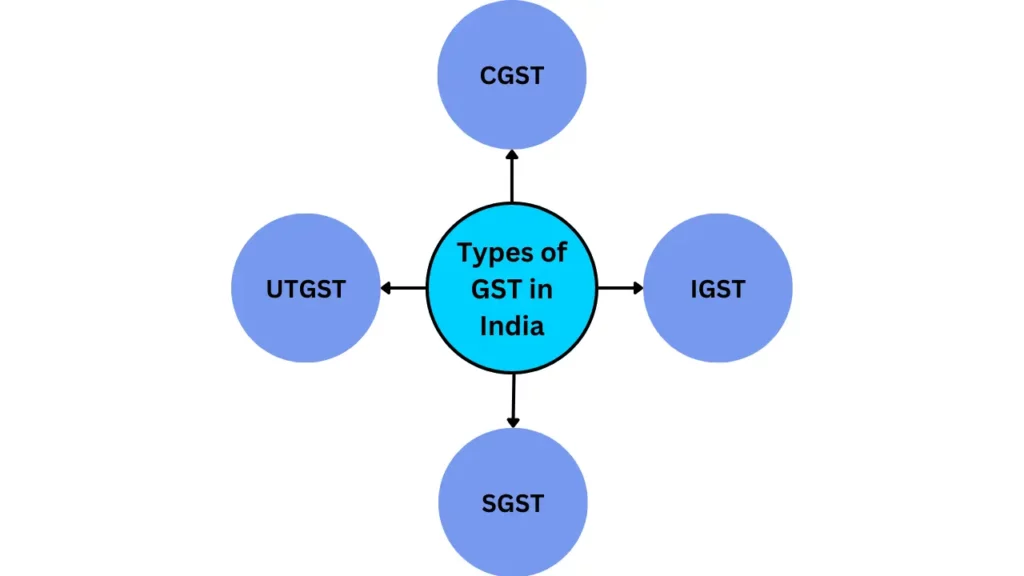
Types of GST Tax
Firstly we will discuss here the different types of GST on the basis of transactions:
Intrastate supplies: The first one is the interstate that is marked when transactions take place between two individuals residing in the same state. Thus the received GST tax is distributed equally between both the central and state governments. The shared percentage is 50 -50 between both.
Interstate supplies: It is estimated, when both individuals are located in different states. The Collected GST goes to the central government and is also known as the Integrated Goods and Services Tax (IGST).
In the next section, we will explain the different components of GST.
Components of GST
Central Goods and Services Tax (CGST)
What is it?
CGST is a tax that the central government of India charges on the sale of goods and services within a state. It is one of three taxes that make up the GST system, along with SGST (state goods and services tax) and IGST (integrated goods and services tax).
Who pays it?
Businesses that sell goods and services within a state need to pay CGST.
Where does the money go?
The revenue collected from CGST goes to the central government and is used to fund central projects, programs, and expenditures.
How is it calculated?
The tax rate for CGST is determined by the GST Council and varies depending on the category of goods or services being taxed.
How do businesses comply?
Businesses registered under GST need to file their CGST returns regularly to report their sales, purchases, and other relevant details. Compliance with CGST regulations is essential to avoid penalties.
What are the benefits of CGST?
CGST has several benefits including:
- It streamlines the taxation system and reduces complexities.
- It promotes a more unified and transparent approach to taxation across the country.
- It helps to boost economic growth.
State Goods and Services Tax (SGST)
What is it?
SGST is a tax charged by the state government on goods and services sold within the state. It is one of three taxes that make up the GST system, along with CGST (central goods and services tax) and IGST (integrated goods and services tax).
Who pays it?
Businesses that sell goods and services within a state need to pay SGST. They can claim an input tax credit for the SGST paid on their purchases, which can be used to offset their SGST liability on their sales. This helps to prevent double taxation and cascading effects.
Where does the money go?
The revenue collected through SGST goes directly to the respective state government. It contributes to state finances and funding for state projects, programs, and expenditures.
How is it calculated?
GST Council will determine the tax rate for SGST. There are different tax rates for different categories of goods and services.
How do businesses comply?
Businesses that are registered for SGST must file returns regularly. The returns must show the business’s sales, purchases, and other relevant details. Businesses that do not comply with SGST regulations may be subject to penalties.
What are the benefits of SGST?
Following are the benefits of SGST
- It helps to unify the taxation system across India.
- It reduces complexities in the tax system.
- It promotes transparency and efficiency in the tax collection process within individual states.
Integrated Goods and Services Tax (IGST)
What is it?
IGST is a tax levied by the central government on the supply of goods and services that involve movement from one state to another or involve import/export. It is one of three taxes that make up the GST system, along with CGST (central goods and services tax) and SGST (state goods and services tax).
Who pays it?
Businesses that sell goods or services across state borders must pay IGST. They can claim a credit for the IGST that they paid on their purchases. This credit can be used to offset their IGST liability on their sales. It helps businesses to prevent double taxation and cascading effects.
Where does the money go?
Both the Central and the state governments shared the revenue collected from IGST. But the destination state receives a larger amount. The revenue collected through IGST is shared between the central government and the state governments, with the destination state receiving a larger share.
How is it calculated?
GST council will decide the tax rate for IGST. There are different tax rates for different categories of goods and services.
How do businesses comply?
Registered businesses are required to file IGST returns regularly, reporting their inter-state sales, purchases, and other relevant details. Businesses can avoid penalties by understanding the IGST regulations and complying with them
What are the benefits of IGST?
IGST has many benefits such as
- It eliminates the complexities associated with inter-state transactions.
- It reduces trade barriers.
- It promotes a unified tax structure across the country.
- It contributes to the ease of doing business.
- It facilitates the movement of goods and services across state boundaries.
- It fosters economic growth and promotes a common market within India.
Keep reading to give a boost to your knowledge. If you are looking for any GST courses then there are many options available to you. You have to analyze which one is best according to your needs
Let’s move to the next GST type in India which is UTGST.
Union Territory Goods and Services Tax (UTGST)
What is it?
UTGST is a tax levied by the central government on the supply of goods and services within the Union Territories of India that do not have their legislative assembly.
Who pays it?
Businesses that sell goods or services within a Union Territory have to pay a tax called UTGST. They can claim credit for the UTGST that they paid for the goods or services that they bought.
This credit can be used to reduce the amount of UTGST that they have to pay on their sales. It helps to ensure that businesses are not taxed twice for the same goods or services.
Where does the money go?
The revenue collected through UTGST goes directly to the administration of the Union Territory in which it was collected. It contributes to the funding of local projects, programs, and expenditures.
How is it calculated?
The UTGST tax rate imposed on different types of products and services will be decided by the GST Council.
How do businesses comply?
Businesses that sell goods or services within a Union Territory must file UTGST returns.
The returns must show the business’s sales, purchases, and other relevant details. If businesses do not file returns or if they file incorrect returns, they may be fined.
What are the benefits of UTGST?
UTGST has the following benefits:
- It simplifies the tax system in Union Territories.
- It promotes economic growth in Union Territories.
- It helps to create a level playing field for businesses in Union Territories.
- It reduces tax evasion.
- It improves compliance with tax laws.
We hope now you have an idea about the types of GST in India and its benefits. The entire GST system is a bit complex but we will try to explain each concept in our articles.
Here we will explore the different types of GST in India with examples. It will help you to clear your concepts. Let’s dive into the application of Goods and Services Tax (GST) with a real-life scenario.
Example: Let us consider you want to purchase a Smartphone
Once you have decided to buy a smartphone from a local electronics store. Here’s how GST is applied at different stages of this transaction:
Manufacturer Stage:
The manufacturer of the smartphone produces it and sells it to a distributor. At this stage, the manufacturer charges GST on the selling price of the phone.
The GST rate that applies to mobile phones is 12%. If the selling price of the smartphone is Rs 10000, the GST charged would be 1200 (12% of 10000).
Distribution Stage:
The distributor receives the smartphones from the manufacturer and sells them to various retailers nationwide. Again, GST is charged on the distributor’s selling price. If the distributor sells the phone to the retailer for Rs 12000, the GST would be Rs 1440 (12% of $12000).
Retail Stage:
You, as a customer, visit a local electronics store and decide to purchase a smartphone. The retailer charges GST on the selling price of the phone. If the retailer sells the phone to you for $15000, the GST would be $1800 (12% of 15000).
In this scenario, let’s assume that the GST rate is the same for all three stages, which is 12%.
Here’s a breakdown of the GST collection at each stage:
- Manufacturer collects:
- Rs 1200
- Distributor collects: Rs 1440
- Retailer collects: Rs 1800
The total GST collected throughout the supply chain for this smartphone transaction is Rs 4440.
It’s important to note that the actual GST rates and calculations can vary based on the specific product category, location, and applicable tax rates. The example illustrates how GST is applied at each stage of the supply chain and how it contributes to the final price of the product for the end consumer.
Hope now it’s clear to you. Let’s explore How different types of GST are applied in the form of CGST, SGST, and IGST to mobile phones
With the same example as mentioned above of purchasing a smartphone from a local electronic store. We’ll consider the GST rates for each type of GST as follows:
- CGST Rate: 12%
- SGST Rate: 12%
- IGST Rate: 12%
Central Goods and Services Tax (CGST) and State Goods and Services Tax (SGST):
In this scenario, let’s assume the purchase takes place within the same state, Maharashtra.
- The electronics store charges CGST of 12% and SGST of 12% on the smartphone.
- CGST collected: 12% of Rs 10000 = Rs 1200
- SGST collected: 12% of Rs 10000 = Rs 1200
Total GST collected by the store: Rs 1200 (CGST) + Rs 1200 (SGST) = Rs 2400
Integrated Goods and Services Tax (IGST):
Now, let’s consider the purchase taking place between two different states, Maharashtra and Gujarat.
- Since it’s an inter-state transaction, IGST is applicable.
- The electronics store charges an IGST of % on the smartphone.
- IGST collected: 24% of 10000 = 2400
Total IGST collected by the store: Rs 2400. In both cases, the total GST collected by the store is Rs 2400. However, the distribution of the tax revenue differs based on the type of GST:
- In the CGST-SGST scenario, Rs 1200 goes to the Central Government (CGST) and Rs 1200 goes to the Maharashtra State Government (SGST).
- In the IGST scenario, the entire Rs 2400 goes to the Central Government, which then redistributes the share to the respective states based on the destination principle.
The choice of which type of GST to apply depends on the nature of the transaction (intra-state or inter-state) and the specific locations of the transaction.
Rates of CGST, SGST, and IGST on Common Commodities
| Commodity | CGST | SGST | IGST |
| Foodgrains, cereals, pulses, and flour | 0% | 0% | 0% |
| Milk, curd, lassi, buttermilk, ghee, and honey | 5% | 5% | 5% |
| Eggs, fish, meat, and poultry | 0% | 0% | 0% |
| Vegetables and fruits | 0% | 0% | 0% |
| Butter, ghee, and cheese | 5% | 5% | 5% |
| Tea, coffee, and spices | 5% | 5% | 5% |
| Sugar and jaggery | 5% | 5% | 5% |
| Edible oils and fats | 5% | 5% | 5% |
| Processed food (excluding non-alcoholic beverages) | 5% | 5% | 5% |
| Non-alcoholic beverages | 12% | 12% | 12% |
| Alcoholic beverages (including beer, wine, and spirits) | 18% | 18% | 18% |
| Tobacco and tobacco products | 28% | 28% | 28% |
| Drugs and pharmaceuticals | 5% | 5% | 5% |
| Cosmetics and toiletries | 12% | 12% | 12% |
| Services such as health care, education, and transportation | 5% | 5% | 5% |
| Other services | 12% | 12% | 12% |
Difference Between Different Types of GST in India
| GST Type | Levied by | Applicability | Revenue Distribution | Purpose |
| Central Goods and Services Tax (CGST) | Central Government | Intra-state transactions (within the same state) | Collected revenue goes to the Central Government | Forms one part of the total GST collected on intra-state supplies state |
| State Goods and Services Tax (SGST) | State Government | Intra-state transactions (within the same state) | Collected revenue goes to the respective State Government | Forms the other part of the total GST collected on intra-state supplies integrated integrated integrated |
| Integrated Goods and Services Tax (IGST) | Central Government | Inter-state transactions (across state boundaries) | Collected revenue is distributed between the Central and Destination State Governments | Ensures seamless movement of goods and services across state borders, promotes inter-state trade-union union |
| Uionn Territory Goods and Services Tax (UTGST) | Union Territory Government | In union territories without a legislative assembly collected | d revenue goes to the respective Union Territory Administration | Similar to SGST, applicable in union territories |
Key Takeaways
We have tried to bind all the basic information of types of GST in India in one place for our readers. The different types of GST work together to create a unified tax system that benefits everyone.
The GST system is still evolving, but it has the potential to transform India’s economy. By understanding the different types of GST, businesses, and consumers can better navigate the tax landscape and take advantage of the opportunities that GST offers.
Read more related articles here
Reverse Charge Mechanism Under GST
GST Reforms: Anti-Profiteering Measures You Should Know
Indian Tax Structure Simplified
What To Expect From Upcoming GST Council Meeting
The Most Transparent And Digitized Tax Structure In India
Top 10 Facts about GST in India
Hope you have not missed anything. If you are interested in learning GST and exploring its core benefits with expert guidance check out GST Certification Course. Meanwhile, no need to worry if you have any confusion at all just comment to us. Our ICA experts will try to help you.
Frequently Asked Questions on GST Types
1. When do businesses need to register for GST?
- Mandatory registration: Businesses need to register for GST when their aggregate turnover exceeds the prescribed threshold limit.
- Inter-state supply: Businesses need to register for GST if they engage in inter-state supplies.
- Casual taxable person: Businesses need to register for GST when they make occasional taxable supplies in a state.
- Input service distributor: Businesses need to register for GST if they distribute input tax credits.
- Reverse charge mechanism: Businesses need to register for GST if they are liable to pay GST under this mechanism.
- E-commerce operator: Businesses need to register for GST if they facilitate the supply of goods/services on e-commerce platforms.
- Non-resident taxable person: Businesses need to register for GST if they are non-resident entities supplying goods/services in India.
- Tax deducted at source (TDS) and tax collected at source (TCS): Businesses need to register for GST if they are required to deduct or collect TDS or TCS.
It is important to note that the threshold limits and other requirements for GST registration are subject to change. Businesses should always refer to the latest GST regulations to ensure that they are complying with the law.
2. How is IGST levied on inter-state transactions of goods and services under GST?
IGST is a single tax that is levied on all inter-state supplies of goods and services. It is collected by the central government and then distributed to the states based on the place of consumption.
It ensures that the taxing authority is based on the place where the goods or services are consumed, rather than the place where they are produced.
Thus it simplifies inter-state trade and ensures seamless movement of goods and services across state boundaries.
3. Why is a dual GST system needed in India?
This system is needed to maintain fiscal federalism, which is the division of financial resources between the central and state governments. The dual GST system allows both the central and state governments to raise revenue from the same goods and services.
It ensures that both governments have the financial resources they need to fund their programs and services. The dual GST system also helps to promote a unified national market by minimizing tax barriers to inter-state trade.
4. What are the types of GST that apply to online sales in India?
The type of GST applicable to online sales in India depends on whether the transaction is intra-state or inter-state.
- Intra-state transactions are those where the seller and the buyer are located in the same state.
- Interstate transactions are those where the seller and the buyer are located in different states.
- For intra-state transactions, both CGST and SGST are applicable.
- For inter-state transactions, IGST is applicable.
5. What type and rate of GST is applied to drop-shipping business?
The type and rate of GST applied to a drop-shipping business depend on whether the transaction is intra-state or inter-state.
- Intra-state transactions are those where the supplier and the customer are located in the same state. For intra-state transactions, CGST and SGST apply. The rates of CGST and SGST are based on the type of goods being sold.
- Inter-state transactions are those where the supplier and the customer are located in different states. For inter-state transactions, IGST applies. The rate of IGST is determined by the GST Council.
6. Does a buyer’s location affect applicable GST types in India?
- The buyer’s location affects the type of GST that applies to a transaction.
- If the buyer and seller are located in the same state, then the transaction is intra-state and both CGST and SGST apply.
- If the buyer and seller are located in different states, then the transaction is inter-state and IGST applies.
- The location of the buyer determines whether the transaction is intra-state or inter-state.
7. Is GST applicable to all types of businesses in India?
- GST applies to most businesses in India, but there are some exceptions.
- The threshold limits and exemptions vary depending on the type of business.
- Businesses that meet the prescribed criteria for turnover or nature of supply are required to register for GST.
- Once registered, businesses must comply with all GST laws and regulations.
- Custom Number Formatting In Excel: Learn Amazing Tricks To Employ - December 27, 2024
- 70 Most Common Power BI Interview Questions and Answers - December 20, 2024
- Chart Of Accounts In Tally Prime: A Definitive Guide For Beginners - December 13, 2024

.jpg)







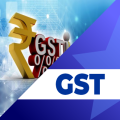






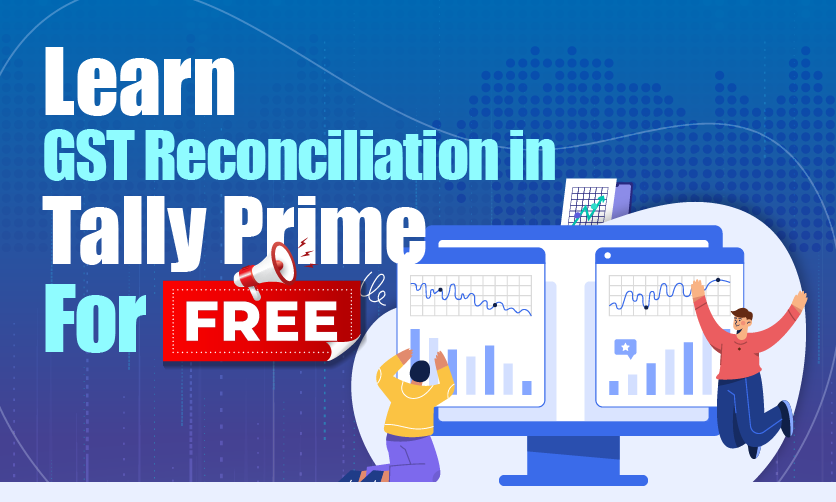
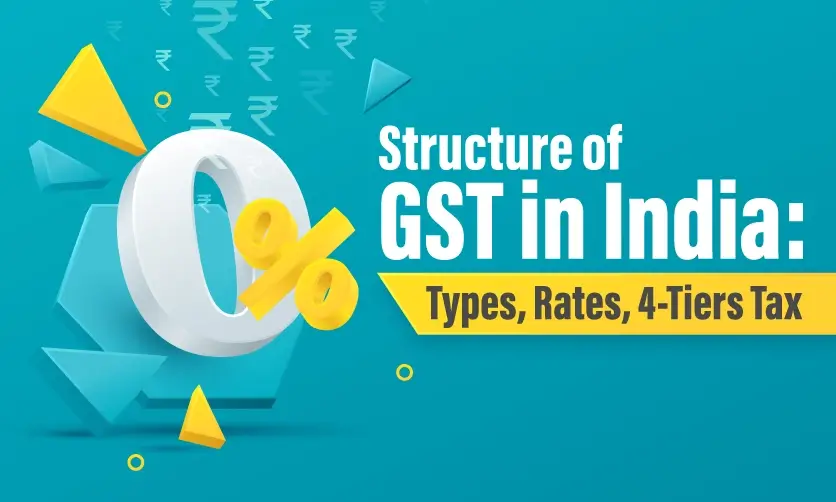
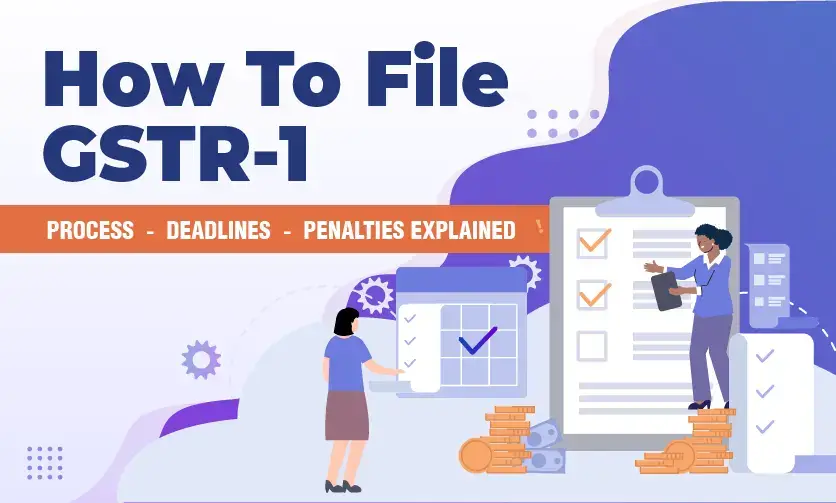
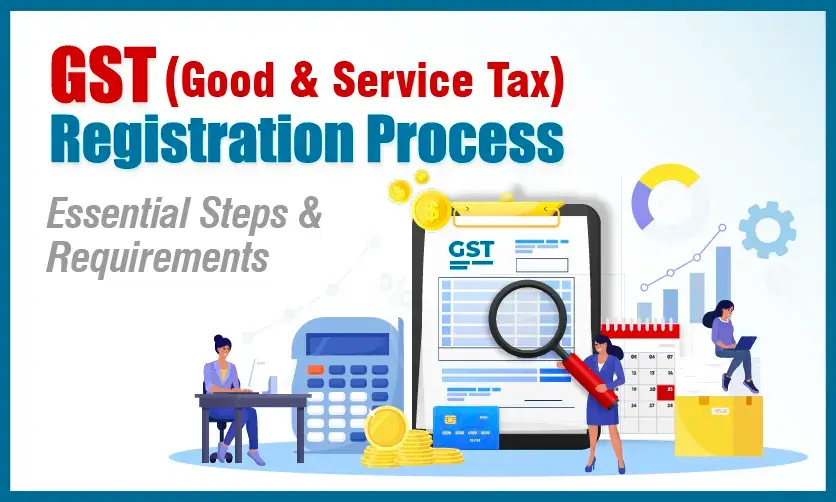
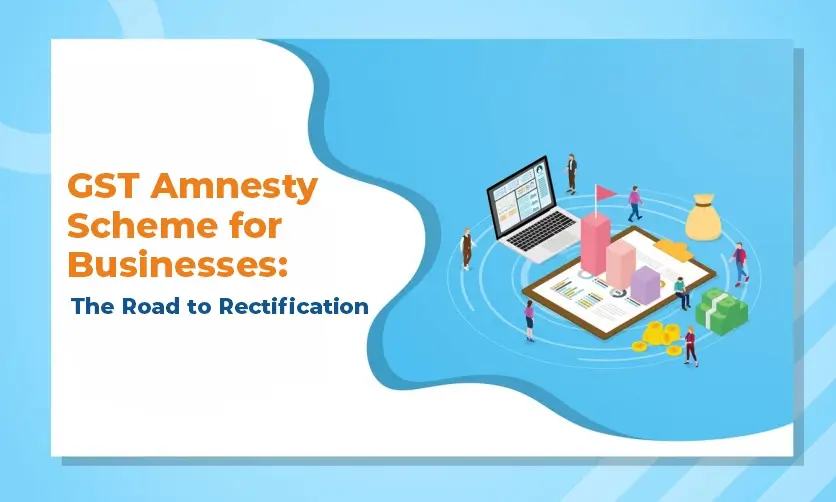

[…] out the complete guide on Types of GST in India and learn from the basic level to enhance your […]